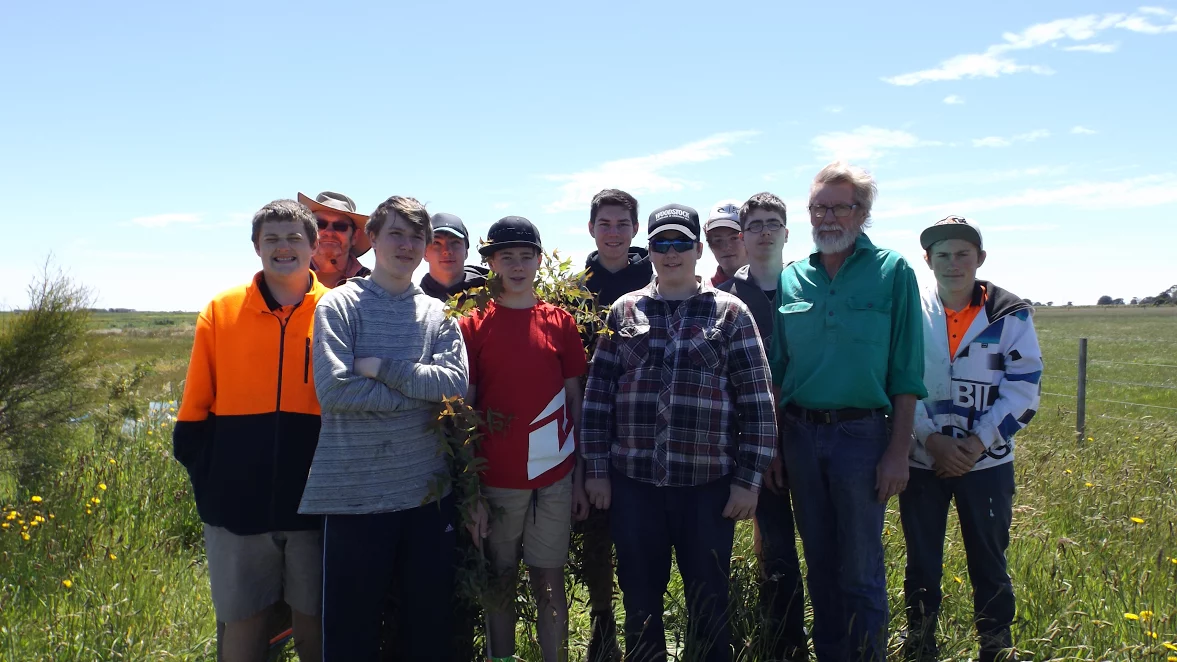Multiple environmental and community benefits result from bio-link project
In 2009 a council environment officer, a researcher, and a Landcare staffer-in-the-making took a drive together down a dusty country road in South West Victoria. As they drove, the researcher mourned the loss of a native grassland on what had been a former railway siding, and the other two talked about how to prevent the same fate for the rest of the lots.
The Green Line Project was hatched, and has since become a determined example of how to ensure the long term relevance and preservation of one of the most significant Victorian Volcanic Plains remnant reserves.
The Green Line is a 37 kilometre linear reserve bio-link that runs between Koroit and Minhamite, where Victrack is the land manager. In its 110 hectares, it boasts a range of soils, topography, and vegetation types. On ecological splendour alone it houses the kinds of state and national treasures that makes one wonder how they managed to endure on a 30 metre width in the heart of the best agricultural land in the state.

Students from Brauer College gaining knowledge and skills at the Green Line project.
But they do, and project coordinator The Basalt to Bay Landcare Network is working with Victrack and Landcare Australia to ensure the unique biodiversity of the site continues to survive and improve. Victrack’s partnership with Landcare Australia is delivering more than $250,000 to help manage and preserve native vegetation and fauna on closed railway lines, and has delivered $30,000 to Basalt to Bay to continue its work on the Green Line.
Lisette Mill, who now works for Basalt to Bay, is starting to feel confident that the model of asset enhancement combined with skills training will ensure that the nature of The Green Line will not be lost.
To date, Basalt to Bay has removed over 400 large pine trees; treated the entire 37km for Briar Roses, and added over 150 new flora records to the Atlas of Living Australia. Another important element of the project is connecting with and educating young people in the community.
“I can yak on about VVP Banksias until your ears bleed – but so what? Talking about an 8km length of increasingly rare trees on The Green Line won’t build more lengths of them on nearby farms or encourage young people in our communities to recognise the importance of protecting this 8km of Banksias,” said Lisette.
Since 2016, the network has partnered with the Hands on Learning Program at Brauer College in Warrnambool. Two classes of Year 8 to 10 Students attend the program once a week, sometimes travelling to The Green Line outdoor classroom.
The students are developing a range of skills and knowledge. They have helped add 200 trees in the Koroit site, and witnessed what a tenacious coloniser gorse can be. They have learnt about direct seeding using Blackwood seed and sand mixes in the gaps between rocks. There has been an impressive range of weed control techniques demonstrated and the corridor is now growing banksias, she oaks, mana gums, and blackwoods.
This year they will be fencing, conducting remote sensing camera surveys, and presenting survey data to members of the Warrnambool Field and Game Group. The students are likely to see southern brown bandicoots, with the possibility of a spotted quoll or powerful owl.
“Witnessing local fauna in their new habitat will give the students the feeling they are making a positive difference to something that up until recently, they had never known existed,” said Lisette.
“In feeling a part of something having such a great impact and learning skills they can use for life, we are keeping the importance of this type of work strong in the hearts and hands of the next generation of environmental custodians.”
For more information, visit www.basalttobay.org.au/strategic-plan/33-green-line-project.



